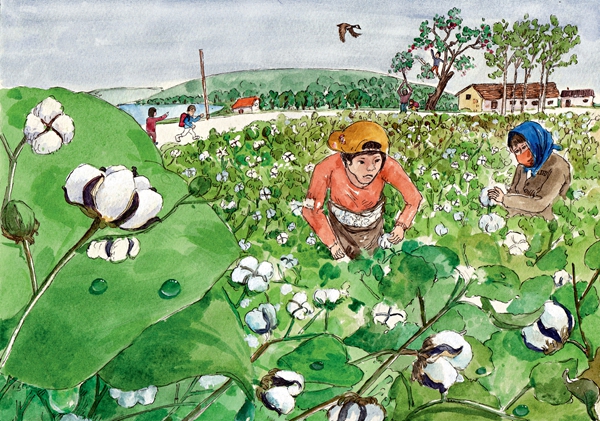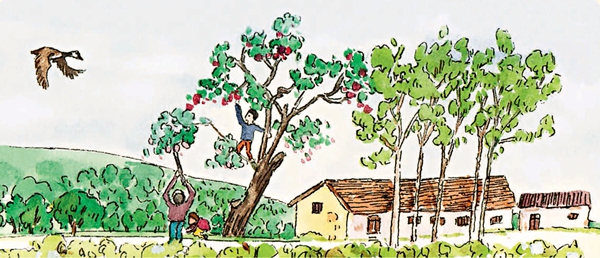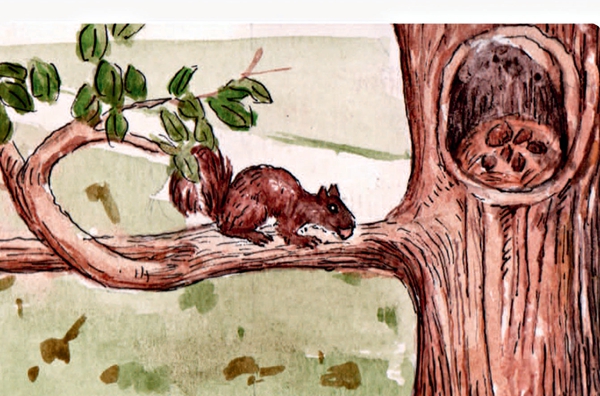Editor’s Note: The traditional Chinese lunar calendar divides a year into 24 solar terms. White Dew (Bailu) and Autumnal Equinox (Qiufen), the 15th and 16th solar terms come and bring a cool autumn chill to earth. This is the best time of the year to go travelling across China.
白露 White Dew
White Dew (Bailu) falls on September 7 in the Gregorian calendar this year. Its arrival indicates the real beginning of a cool autumn. The temperature at this time of year declines gradually and the vapors in the air often condense into white dew on the grass and trees at night. However, the summer heat still lingers, which leads to the biggest temperature difference between morning and night of the year. White Dew is a time of mellow fruitfulness.

Cold air masses begin blowing southward, and every night begins to grow cooler. In the morning, when the autumn breeze comes, dew on the flowers and leaves falls to the ground like crystals.
Sweet-scented Osmanthus is in full blossom now, sharing its sweet fragrance throughout the air. The flowers are small and have different colors, ranging from yellowish white to orange. They are both a feast for the eyes and the stomach of Chinese people, as the flowers are often made into tea, wine, and cakes, which are warmly welcomed. Sweet-scented Osmanthus represents sublimity, purity, honor, and good luck in Chinese culture. In ancient China’s imperial examinations, those who got the top score were called zhegui (literally means snapping a branch from the sweet-scented Osmanthus tree). This word is still widely used today.

In Beijing, large sweet-scented Osmanthus trees can be seen in the Summer Palace in potting soil, drawing numerous local visitors to come and admire their beauty.
Birds, sensitive to the change in temperature, are taking actions to cope with it at this time of year. Wild geese and swallows are setting out to fly southward in flocks to pass the winter, while resident birds such as magpies and sparrows stay for winter with their thick feathers to keep them warm.
White Dew comes around the time when the summer vacation ends and students usher in a new school term. In rural China, dates at this time of year turn from green to red and hang heavily on the trees along the roadside. They are sweet, crunchy, and flavorful.
The gorgeous sunny fall days form the prime travelling time across China. Varying by geographical location, autumn sets in earlier in the west part of China. From Xinjiang and Shaanxi in the northwest, to Sichuan in the southwest, tourist spots such as Kanas, Huashan Mountain, and Jiuzhaigou Valley are at their most beautiful. The gorgeous landscape, clear skies, as well as the splendid local culture can give you a memory for life.
The Autumnal Equinox (Qiufen) falls on September 23. On this day, the sun shines directly on the equator, and, as a result, daytime is as long as night. After this day, nighttime in the northern Hemisphere starts getting longer while daytime gets proportionally shorter. The ground heat dissipates more and more quickly. By the time this solar term arrives, half of autumn has already gone by. In Chinese culture, as a result of respect for nature, Chinese people make offerings and sacrifices to the sun in spring and to the moon in autumn. Yuetan (Altar of the Moon), one of the five altars in Beijing, was built in 1530 for emperors to give sacrifices to the moon.

Animals that need to hibernate during winter now begin to fatten themselves to get prepared; while those that don’t hibernate are also busy storing food for winter.
After the Autumnal Equinox, thunder and lightning gradually die away and rainfall lessens. The temperature drops sharply after the Autumnal Equinox; as a result, the ground surface temperature is not high enough for plants to grow. That’s why an autumn harvest becomes a top priority for farmers. Farmers busy themselves with the autumn harvest of rice, corns, beans, and sunflowers, and autumn ploughing and sowing of winter wheat and oilseed rape. Besides grapes, persimmons, and pears… almost all fruits are ripe at this time of year.
The biggest event linked with the Autumnal Equinox is the Mid-Autumn Festival (Zhongqiujie). It is on August 15 of the Chinese lunar calendar and is celebrated as the second most important festival after Chinese New Year, since a family reunion is always expected.
With a history of over 3,000 years, this festival dates back to the Shang Dynasty (1600 – 1046 BC) when people held moon-worship activities, as the moon on this day was believed to be the fullest, which still remains true to this day. For the Chinese, a full moon symbolizes prosperity and reunion. On this day, people eat mooncakes, worship the moon, and fly lanterns in the sky.
Since ancient times, the Mid-Autumn Festival has been a very important festival and remains so today, as such; there are numerous poems about this festival. Of all the poems, Su Shi’s “Prelude to Water Ripple” (Shui diao ge tou) might be the most famous:
We all have joys and sorrows, partings and re-unions.
The moon, its phases of resplendence,
Waxings and wanings —
Nothing in this world is ever perfect.
I wish a long life to us all.
Then, however far apart we are
We’d still be sharing the same enchanting moonlight.
(Written by Su Shi from the Song Dynasty (960-1279), translated by Gong Jinghao)
(Compiled by China Today based on The Twenty-Four Solar Terms Published by Dolphin Books)



